Applied Mathematics
Vol.4 No.6(2013), Article ID:32581,14 pages DOI:10.4236/am.2013.46124
Numerical Solution for Accelerated Rotating Disk in a Viscous Fluid
1Centre for Advanced Studies in Pure and Applied Mathematics, Bahauddin Zakariya University, Multan, Pakistan
2Punjab Higher Education Department, Govt. Degree College Darya Khan, Bhakkar, Pakistan
3Department of Mathematics, Gomal University, Dera Ismail Khan, Pakistan
Email: sajjad_h96@yahoo.com, *farooqgujar@gmail.com, mshafique6161@yahoo.com, siffat2002@gmail.com
Copyright © 2013 Sajjad Hussain et al. This is an open access article distributed under the Creative Commons Attribution License, which permits unrestricted use, distribution, and reproduction in any medium, provided the original work is properly cited.
Received September 23, 2012; revised February 24, 2013; accepted March 2, 2013
Keywords: Newtonian Fluids; Numerical Analysis; Rotating Disk
ABSTRACT
The problem of a disk rotating in a viscous fluid has been investigated. The disk is accelerated with angular velocity proportional to time. Employing suitable similarity transformations the governing partial differential equations are transformed in to ordinary differential form. The resulting equations are solved numerically using SOR method and Simpson’s (1/3) rule. The results have been improved by using Richardson’s extrapolation. The effect of the non-dimensional parameter s which measures unsteadiness is observed on velocity components, skin friction coefficient and torque of the disk.
1. Introduction
The flow of an incompressible viscous fluid past an infinitely rotating disk was first studied by Von Karman [1] who reduced the necessary Navier-Stokes equations to self-similar form by means of some transformations and derived approximate solutions. Different physical situations were studied in this area by Dolidge [2], Sparrow & Gregg [3] and Benton [4]. Watson et al. [5] considered the flow past a decelerating porous rotating disk and they studied the effects of time dependent suction or injection velocity on the flow of a viscous fluid. Watson et al. [6] considered the two dimensional channel flow symmetrically driven by accelerating walls. Ariel [7] studied the problem of steady laminar flow of a second grade fluid near a rotating disk. The motion of an electrically conducting fluid film squeezed between two parallel disks in the presence of a transverse magnetic field was studied by Hamza [8]. MHD flow due to non coaxial rotations of an accelerated disk and a fluid at infinity was analyzed by Asghar et al. [9].
Unsteady flows are of importance from the practical point of view and full unsteady Navier-Stokes equations with all the unsteady, nonlinear and viscous terms are difficult to solve whereas exact solutions are rare. However, similarity solution to the governing equations is of special interest in case of fluid flow along a rotating disk. Wang [10] studied a viscous fluid between two parallel plates, which are being squeezed or separated with normal velocity proportional to  and found similarity solutions of the unsteady Navier-Stocks equations. Ishizawa [11] derived a similarity solution to the case of the unsteady laminar flow between two parallel disks. Pop [12] investigated the problem of unsteady flow past a wall which starts impulsively to stretch from rest. Nazar et al. [13] investigated unsteady boundary layer flow due to a rotating fluid. Xu et al. [14] considered unsteady three dimensional MHD flow and heat transfer in boundary layer over an impulsively stretching plate.
and found similarity solutions of the unsteady Navier-Stocks equations. Ishizawa [11] derived a similarity solution to the case of the unsteady laminar flow between two parallel disks. Pop [12] investigated the problem of unsteady flow past a wall which starts impulsively to stretch from rest. Nazar et al. [13] investigated unsteady boundary layer flow due to a rotating fluid. Xu et al. [14] considered unsteady three dimensional MHD flow and heat transfer in boundary layer over an impulsively stretching plate.
Watson and Wang [15] solved the problem for decaleration of a rotating disk in a viscous fluid for the range . They also viewed that similarity solution do not exist for
. They also viewed that similarity solution do not exist for 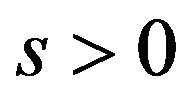 which corresponds to the accelerated rotating disk. In the present work, the numerical solutions have been found for an accelerated
which corresponds to the accelerated rotating disk. In the present work, the numerical solutions have been found for an accelerated  rotating disk in a viscous fluid. The case
rotating disk in a viscous fluid. The case  corresponds to steady rotation of a disk in a fluid.
corresponds to steady rotation of a disk in a fluid.
2. Mathematical Analysis
The fluid flow is unsteady and incompressible. u, v, w are velocity components in cylindrical polar coordinates (r, θz). The z-axis is the axis of rotation of the disk, with  on the surface of the disk. The following similarity transformations are used:
on the surface of the disk. The following similarity transformations are used:
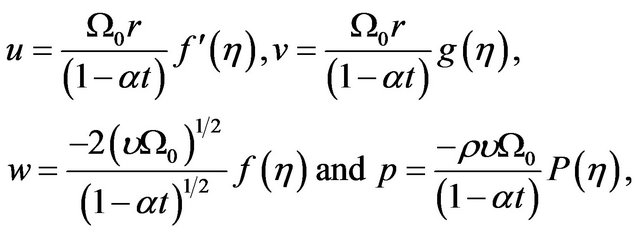 (1)
(1)
where  is the dimensionless variable,
is the dimensionless variable, ![]() is non dimensional constant and
is non dimensional constant and  is a positive constant. When
is a positive constant. When , the problem reduces to the case of the steady rotation of a disk in a fluid. We shall study the case when
, the problem reduces to the case of the steady rotation of a disk in a fluid. We shall study the case when . By using Equation (1), Navier-Stokes equations reduce to a set of nonlinear ordinary differential equations
. By using Equation (1), Navier-Stokes equations reduce to a set of nonlinear ordinary differential equations
 (2)
(2)
 (3)
(3)
where prime denote differentiation with respect to  and
and  is non-dimensional parameter which measures unsteadiness.
is non-dimensional parameter which measures unsteadiness.
The associated boundary conditions are
 (5)
(5)
Let  (6)
(6)
The Equations (2) and (3) become:
 (7)
(7)
 (8)
(8)
The boundary conditions (5) take the form:
 (9)
(9)
In order to obtain the numerical solutions of nonlinear ordinary differential Equations (7) and (8), we approximate these equations by central difference approximation at a typical point 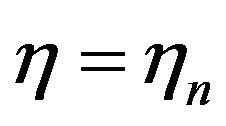 of the interval
of the interval , we obtain
, we obtain
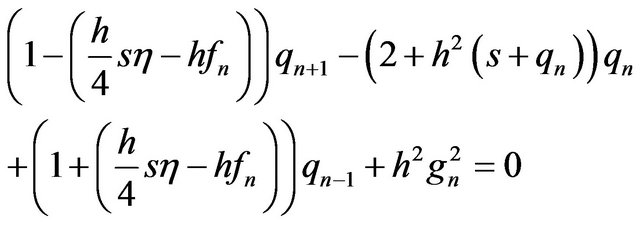 (10)
(10)
 (11)
(11)
where h denotes a grid size and Equation (6) is integrated numerically. Also, the symbols used denote  and
and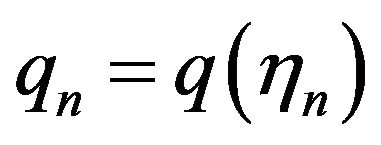 . For computational purpose, we shall replace the interval
. For computational purpose, we shall replace the interval  by
by  where β is a sufficiently large.
where β is a sufficiently large.
3. Computational Procedure
Finite difference Equations (10) and (11) and the first order ordinary differential Equation (6) are solved simultaneously by using SOR method, Smith [16] and Simpson’s (1/3) rule, Gerald [17] with the formula given in Milne [18] respectively subject to the appropriate boundary conditions.
The order of the sequence of iterations is as follows:
1) The Equations (10) and (11) for the solution of q and g are solved subject to the following boundary conditions:

2) For the solution of , we use the computed values q from above step in to Equation (6) and integrate by Simpson’s (1/3) rule subject to the following initial conditions:
, we use the computed values q from above step in to Equation (6) and integrate by Simpson’s (1/3) rule subject to the following initial conditions:

3) The optimum value of the relaxation parameter  is estimated, to accelerate the convergence of the SOR method.
is estimated, to accelerate the convergence of the SOR method.
4) The SOR procedure is terminated when the following criterion is satisfied for each of q and g:

where n denotes the number of iterations and  stands for each of
stands for each of  and
and![]() .
.
The above steps 1 to 4 are repeated for higher grid levels  and
and . The SOR procedure gives the solution of
. The SOR procedure gives the solution of 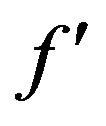 and
and ![]() of order of accuracy
of order of accuracy  due to second order finite differences used for finite-difference equations. While, the Simpson’s (1/3) rule gives the order of accuracy
due to second order finite differences used for finite-difference equations. While, the Simpson’s (1/3) rule gives the order of accuracy  in the solution of f. Higher order accuracy
in the solution of f. Higher order accuracy 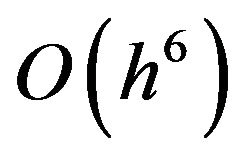 on the basis of above solutions is achieved by using Richardson’s extrapolation, Burden [19].
on the basis of above solutions is achieved by using Richardson’s extrapolation, Burden [19].
4. Numerical Results and Discussion
The numerical results have been found for the values of parameter s for range . In order to check the accuracy of the results, calculation have been made on three different grid sizes namely
. In order to check the accuracy of the results, calculation have been made on three different grid sizes namely  and 0.0125. The results for skin friction coefficient
and 0.0125. The results for skin friction coefficient  and torque
and torque  are presented in Table 1. It is observed from the values given in the Table No. 1 that skin friction coefficient
are presented in Table 1. It is observed from the values given in the Table No. 1 that skin friction coefficient  decreases with increasing values of s.
decreases with increasing values of s.
Also, the torque experienced by the disk  becomes more negative with increasing values of s > 0. It means that rotating disk experiences increasing resistance with increasing values of s.
becomes more negative with increasing values of s > 0. It means that rotating disk experiences increasing resistance with increasing values of s.
It is imperative to describe the effect of the parameter s on the flow pattern. So the graphical results of the velocity components have been exhibited in the Figures 1-3. Figure 1 shows the axial velocity distribution . Figure 2 elucidates the circumferential velocity distribution
. Figure 2 elucidates the circumferential velocity distribution . The radial velocity distribution
. The radial velocity distribution  has been depicted in Figure 3. It is observed that all the velocity components decrease by increasing s.
has been depicted in Figure 3. It is observed that all the velocity components decrease by increasing s.
The torque T experienced by the disk of radius R, may

Table 1. Data of skin friction coefficient & torque.

Figure 1. Graph of the axial velocity distribution  for different values of s.
for different values of s.
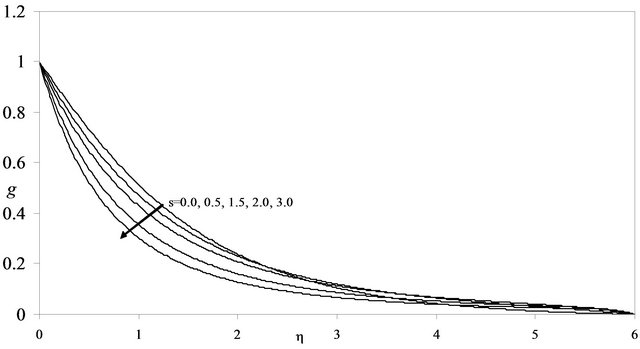
Figure 2. Graph of the circumferential velocity  for different values of s.
for different values of s.
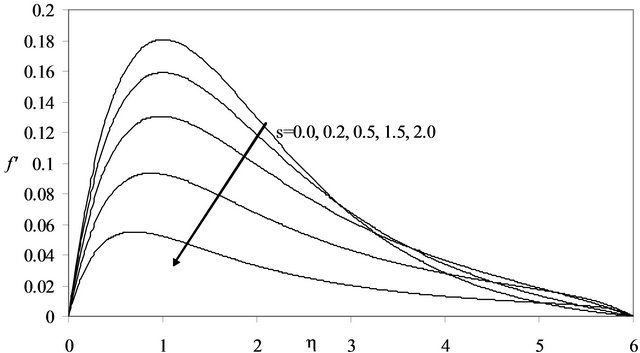
Figure 3. Graph of radial velocity distribution for different values of s.
for different values of s.
be written as:

For positive values of s, the rotating disk experiences a resistance, hence  is negative as shown in Table 1.
is negative as shown in Table 1.
REFERENCES
- T. Von Karaman, “Uberlaminare und Turbulent Reibung,” Zeitschrift für Angewandte Mathematik und Mechanik, Vol. 1, 1921, pp. 233-252. doi:10.1002/zamm.19210010401
- D. E. Dolidge, “Unsteady Motion of a Viscous Liquid Produced by a Rotating Disk,” Prikladnaya Matematika i Mekhanika, Vol. 18, 1954, pp. 371-378.
- E. M. Sparrow and J. L. Gregg, “Flow about an Unsteadily Rotating Disk,” Journal of the Aeronautical Sciences, Vol. 27, No. 4, 1960, pp. 252-257.
- E. R. Benton, “On the Flow Due to a Rotating Disk,” Journal of Fluid Mechanics, Vol. 24, No. 4, 1966, pp. 781-800. doi:10.1017/S0022112066001009
- L. T. Watson, K. K. Sanakara and L. C. Mounfield, “Deceleration of a Porous Rotating Disk in a Viscous Fluid,” International Journal of Engineering Science, Vol. 23, 1985, pp. 131-152. doi:10.1016/0020-7225(85)90022-9
- E. B. Watson, W. H. H. Banks, M. B. Zaturska and P. G. Drazin, “On Transition to Chaos in Two Dimensional Channel Flow Symmetrically Driven by Accelerating Walls,” Journal of Fluid Mechanics, Vol. 212, 1990, pp. 451-485. doi:10.1017/S0022112090002051
- P. D. Ariel, “Computation of Flow of a Second Grade Fluid near a Rotating Disk,” International Journal of Engineering Science, Vol. 23, 1997, pp. 1335-1357. doi:10.1016/S0020-7225(97)87427-7
- E. A. Hamza, “Unsteady Flow between Two Disks with Heat Transfer in the Presence of a Magnetic Field,” Journal of Physics D: Applied Physics, Vol. 25, No. 10, 1992, pp. 1425-1431. doi:10.1088/0022-3727/25/10/007
- S. Asghar, K. Hanif, T. Hayat and C. M. Khalique, “MHD non Newtonian Flow Due to Non Coaxial Rotations of an Accelerated Disk and a Fluid at Infinity,” Communication in Nonlinear Science and Numerical Simulation, Vol. 12, No. 4, 2007, pp. 465-485. doi:10.1016/j.cnsns.2005.04.006
- C. Y. Wang, “The Squeezing of a Fluid between Two Plates,” Journal of Applied Mechanics, Vol. 43, No. 4, 1976, pp. 579-583. doi:10.1115/1.3423935
- S. Ishizawa, “The Unsteady Laminar Flow between Two Parallel Disks with Arbitrarily Varying Gap Width,” Bulletin of JSME, Vol. 9, No. 35, 1966, pp. 533-550. doi:10.1299/jsme1958.9.533
- I. Pop, “Unsteady Flow past a Stretching Sheet,” Mechanics Research Communications, Vol. 23, No. 4, 1996, pp. 413-422. doi:10.1016/0093-6413(96)00040-7
- R. Nazar, N. Amin and I. Pop, “Unsteady Boundary Layer Flow Due to a Rotating Fluid,” Mechanics Research Communications, Vol. 31, 2004, pp. 121-128. doi:10.1016/j.mechrescom.2003.09.004
- H. Xu, S. J. Liao and I. Pop, “Series Solution of Unsteady Three Dimensional MHD Flow and Heat Transfer in Boundary Layer over an Impulsively Stretching Plate,” European Journal of Mechanics, Vol. 26, No. 1, 2007, pp. 15-27. doi:10.1016/j.euromechflu.2005.12.003
- L. T. Watson and C. Y. Wang, “Deceleration of a Rotating Disk in a Viscous Fluid,” Physics of Fluids, Vol. 22, No. 12, 1979, pp. 226-2269. doi:10.1063/1.862535
- G. D. Smith, “Numerical Solution of Partial Differential Equation,” Clarendon Press, Oxford, 1979.
- C. F. Gerald, “Applied Numerical Analysis,” AddisonWesley Publication, New York, 1989.
- W. E. Milne, “Numerical Solution of Differential Equation,” Dover Publication, New York, 1970.
- R. L. Burden, “Numerical Analysis,” Prindle, Weber & Schmidt, Boston, 1985.
NOTES
*Corresponding author.

